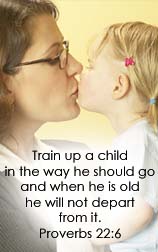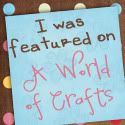Thanks to the Homeschool Review Crew, we have become quite familiar with Memoria Press, a family-run publishing company that appears to be quite well known in Christian homeschooling circles. They carry classical curriculum in many subjects, several of which we have had the chance to review in the past. This time around I thought it would be fun to add some poetry into our days, and I was quite excited when I learned that Tabitha would be using the Poetry for the Grammar Stage Set.
This set was designed to be used with Memoria Press' literature study guides as a supplemental study of the poems that are memorized. However, as we are discovering, this set can most definitely be used independently of the literature guides. If we were using this with the Classic Core Curriculum, it would take us four years to make our way through the poems. However, we have been working at a pace of one poem per week, which would mean we could potentially work through the poems in one school year. However, seeing as these poems do become longer and more complex toward the end of the book, it would make sense to work on these later poems at a slower rate.
Here is a look at the list of poems and the books they would go with:
Let's take a quick look at each of the books in this set.
Student Guide
The poem is printed out on the page, and there is a framed space for the student to illustrate it.
Teacher Guide
Anthology
How did we use these books?
As I've mentioned, we have been focusing on one poem a week. At the beginning of each week I read the poem to all the children during our "Table Time." On another day I will have Tabitha read it. Each week, as we add more poems, I will read through all of them at least once during the week. Sometimes Tabitha joins in with parts she remembers. We will review the vocabulary words to make sure she understands them. Then, during "Individual Time," Tabitha will either head to her room to work on the questions and the copywork, or she will sit at the dining room table.
I allow her to take the time she needs through the week to work on these pages. She's even been known to work in the van and in the doctor's office. And if she is struggling with the questions, she can come to myself or her dad for help.
I admit, there are times her father and I are just as stumped as she is, so we are quite grateful for the answers that are provided in the Teacher Guide. Poetry is not one of my strengths, which is one of the reasons I thought it would be fun to work through this poetry set. I am hoping to learn alongside Tabitha.
So far we have really enjoyed being able to read and get deeper into these poems. One of Tabitha's favorite parts is being able to add her own illustrations. Honestly, I figured she would enjoy that part of the book, seeing as she is quite the artist. I appreciate that she is slowly learning more details regarding poetry terms, learning them as she comes across them in the poems and works on her analysis.
I have to admit, I am not sure Hannah (my third grader) would be able to work through these poems the way Tabitha currently is. I was surprised to discover that this set is recommended for 3rd-7th grade. I realize we really haven't focused on poetry in our homeschool, so I can see the possibility of working through these slowly at a younger age, and building on the foundation. However, I'm sort of glad I decided to use it with Tabitha instead of Hannah, as there is a lot of writing that Hannah would definitely have struggled with.
I'm so thankful that we were given this opportunity to add poetry into our homeschool. And I definitely feel that I can recommend Poetry For the Grammar Stage Set, though perhaps for children in the older part of the grade range as opposed to third or even fourth grade. Though perhaps children who are used to a classical education would be better prepared for this at a younger age.
My fellow Crew Mates and I were given the choice of quite a few different products for this review. Some of them are reviewing the First Start Reading Program, which we reviewed four years ago. Others are reviewing various levels of Poetry. Still others are reviewing different levels of Latin, ranging from Prima Latina to Fourth Form Latin. We actually reviewed Latina Christiana two years ago.
So, don't forget to click on the banner below to see what my fellow Crew Mates think of these different products from Memoria Press.











































![[PREMIO2009.png]](https://blogger.googleusercontent.com/img/b/R29vZ2xl/AVvXsEjXD_Gx-wZ9EM5hXKrEYLksEBkYfRQtmb8VDVTDG_yyLggQoFIstZsh4zszdG20KqErZicRzEhiNYLty7j3IMXJYsABqkXjr8pp-ncj71xCbpxlXGbGpZq2fTuDQqq1RMKV4DPcDBnBViA/s1600/PREMIO2009.png)




Love Memoria Press. This item looks like such fun!
ReplyDelete